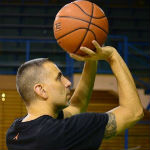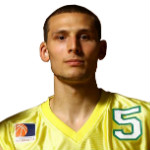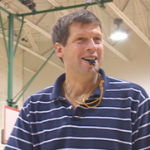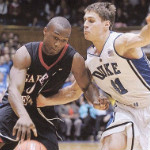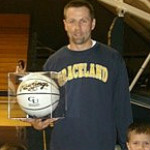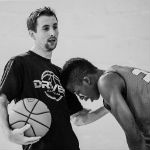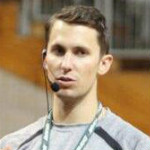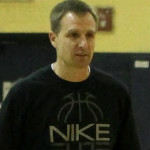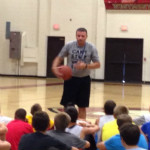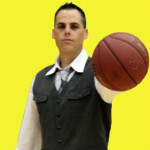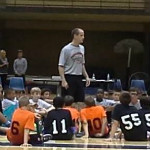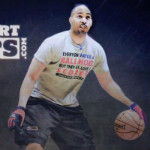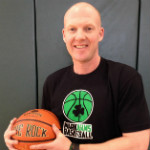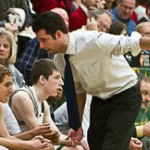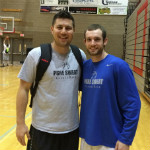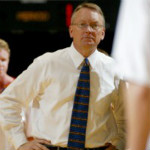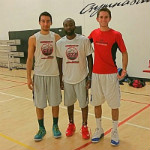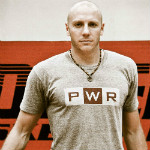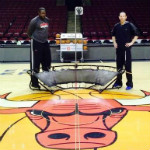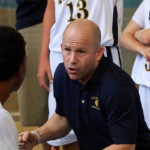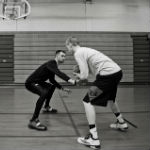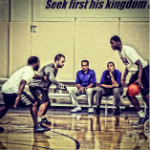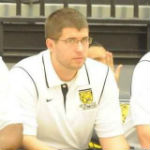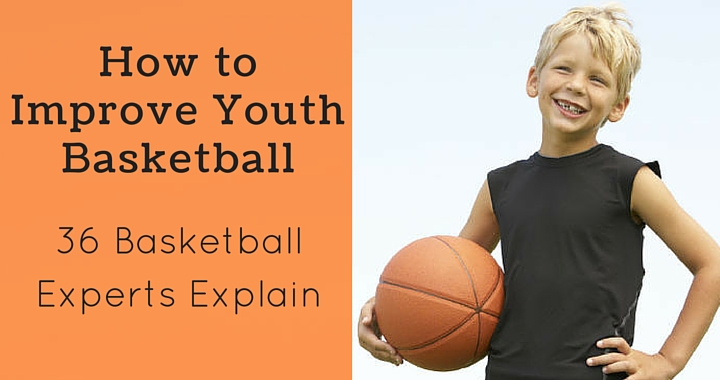 Different ways to improve youth basketball is a topic I often find myself having with coaches from all over the world.
Different ways to improve youth basketball is a topic I often find myself having with coaches from all over the world.
While the opinions are often similar, what I love hearing are the different reasons why each coach or trainer wants the specific changes to be made. It’s enlightening to see the different perspectives and view-points each coach has.
So for this month’s question, I decided to focus on exactly that… ways to improve youth basketball.
I asked 36 experts this question…
“What are 1 – 3 things you would change to improve youth basketball?”
Since we’ve created this type of post a couple of times now and coaches are starting to get an idea who they relate to and who provides the best answers, here’s a handy list you can use to skip to your favorite expert!
Adam Filippi, Augie Johnston
Bob Bigelow, Brian McCormick, Bryan Burrell
Casey Dudek,
Damin Altizer, David Nurse, Drew Hanlen, Duane Jourdeans
Galen Harkness, Gary Maitland, Gary Petrin, Greg White
Hal Wilson,
Janis Meredith, Jeremy Russotti, Joe Haefner, Jordan Delp
Kevin Mitchell, Koran Godwin, Kyle Ohman
Mark Adams, Matt Monroe, Mike Costello
Paige White,
Randy Brown, Ryan Razooky, Ryan Walker
Scott Fields, Sundance Wicks
Tamir Goodman, Tommy Hulihan, Trafford Hannon, Tyler Relph
Wesley Kosel
Ways to Improve Youth Basketball
Adam Filippi – Pro Basketball Training
1. Too many games, not enough teaching: Fundamentals are paramount.
2. Too much dribbling: Need to see more passing and moving, basic spacing prinicples
3. Parenting: Let the coach teach, let the kids play. Respect the coach, but make sure he is an educator.
Augie Johnston – Baller Boot Camp
No zone defense allowed. I know some leagues enforce this already, but it’s not everywhere. Young players need to be held accountable on defense and learn how to guard out of a man to man situation.
Another thing I think would benefit youth basketball would be a bigger focus on skill development. Kids play. They play at recess, they play after school, they play AAU, they play year round. But you’ll notice that many of them don’t work on their skill sets and then when their school seasons start they lack the basic fundamentals to make plays in a more structured 5 on 5 environment.
Bob Bigelow – BobBigelow.com
Since you’re Australian, and I know your website appeals to basketball folks around the world; let’s define ‘youth basketball’ before I answer…
Technically, worldwide, ‘youth’ basketball refers to ages 16 and under, boy and girls… because the regional, international and intergalactic basketball championships between national teams usually starts at age 17. Therefore, everything younger falls under the definition of ‘youth’.
For this post, I’ll define youth basketball using the public school ‘grade’ system here in the US. Classic high school grades and ages – grades 9-12, and ages 14-18 – will be left out of this discussion. Elementary (grammar) school ages (grades Kindergarten through 5th, typically ages 5-11); and ‘middle’ (junior high in my youth 100 years ago!) school, 6th to 8th grades, and ages 11-14 will encompass the changes cited here.
To be honest, although there are (way too) many ‘formal’ basketball programs for 5-8 years old here in the US, and elsewhere in the world; I’ll concentrate on the 3rd to 8th grade(ages 8-14) segment here. Anyone who is running a program for players 7 and under better make FUN priorities #1-100! Lots of dribbling, shooting and passing contests, plenty of ‘play group’ activities (with or without a ball); and lots of smiling, and red from exertion, faces to boot. For 25 years, I have called this programming, “trying to organize the unorganizeable”. Trying to ‘organize’ 5 on 5 games is ridiculous and fruitless. The square peg in the round hole of little tykes basketball. At older ages (10! Real veterans!), a friend of mine refers to this as “rugby, disguised as basketball”. At ages 5 to 7 or 8, just call it complete and utter chaos…
Change #1 – Height of the Rim
To my non-American friends; apologies up front, I’ll deal in feet and inches; although I’ve been a big fan of the metric system for 40+years… my height is 2 meters and my weight is 100 kilograms…
Grades Kindergarten to 2nd (ages 5-8) basket height – 6 feet
Grades 3rd and 4th (ages 8-10) basket height – 8 feet
Grade 5 (ages 10-11) basket height – 9 feet
Grade 6 and up (ages 11/12 and beyond) basket height -10 feet
These are the same recommendations made by the American Sport Education Program (ASEP) 25-30 years ago; and I wholeheartedly agree. ASEP was established by the venerable and esteemed Rainer Martens and other brilliant colleagues about 50 years ago in Champaign, (Univ of) Illinois. They have spent millions of man hours and dollars studying how best to develop sports programs that meet the age-appropriate needs of children of all ages.
Here in America, having been speaking on the subjects of youth sports and basketball for 25 years; and having seen thousands of youth basketball programs (and a gazillion players and games), my educated hypothesis is that well over 95% of 3rd/4th grade (ages 8-10) basketball programs are played at 10 foot rims. The average sized, 10 year old(4th/5th grade) girl or boy is 4 feet, 8 inches and 78 pounds (big kids are 5-0 and 92 pounds!). They are shooting at the same height basket as LeBron James (6-7, 250 pounds) and Dwight Howard (6-11, and 270 pounds). Why are our elementary school players shooting at the same basket height as NBA professionals?
Lower the baskets, and you can begin to teach the ‘rudiments” of shooting form. If your baskets are too tall, and your players too young; shooting ‘form’ will consist of heaves thrown in the general direction of the basket…
And now, as of 20-30-40 years ago, we ‘add’ the 3 point shot (!?!?!?) to this equation… I’ll use the old quote from a friend of mine nearby in the state of Connecticut… these young players are “anvil-tossing jockeys” (great line; wish I had thought of it!). For those who aren’t into horse racing; “jockeys” are the ones who ride the horse…
One other quick thought… smaller balls for smaller hands… I hope I don’t have to explain that…
Change #2 – Man to Man Half Court Defense until 15 – 16 years old.
Thankfully, because my fingers are getting tired, the reader will not have to digest the 4,567 words of dialog I usually give on this subject.
I’ve asked the following question of over 1000 high school college and professional coaches the past 25 years… including Chuck Daly (my college coach), Red Auerbach (no explanation needed, I hope!), and Stan Van Gundy (current Detroit Pistons coach/GM) and former college coach here in the Boston area 25 years ago when I first met him…
The question…”at what basketball grade level should we start teaching/coaching defenses that are NOT man to man; in other words zones, presses, traps, boxes and ones, triangles and two’s and any other variations our future Hall of Fame youth coaches can devise?” The answer has been consistently (99%) – High school Junior Varsity… which is approximately 15-16 years old for readers who don’t have kids in the American school system.
The sad thing is there are far more coaches at the 8 – 14 year old level playing zone and pressing in this country, than those who play man to man. The simple answer: the lower the ages on the offensive skill development spectrum, the easier it is to win games with defenses other than man to man. I have seen 12 year old games here in the States during the last 20 years where the ball was not even shot at the basket for 5 minutes, because the two teams playing couldn’t advance the ball close enough to the basket to even get a shot. Can you imagine games where there were 3 times as many turnovers as shots taken? Regrettably, I’ve seen them… and I’ll never get that time back!
The two most important concepts in learning basic defense are: (1) guarding on the ball and (2) guarding away from the ball. The latter is more important because any defender spends more time away from the ball than they do on the ball… it’s simple math… one ball and five defenders. Every youth coach should be teaching these two concepts… with zones and presses, players guard areas, not offensive players.
Younger offensive players being zoned or pressed rarely get a chance to play offense with only one defender in front of him or her (many times those defenders are on the side, and/or coming up from behind). The offensive players’ sight lines are obscured even more by double teams… and the passes needed to ‘break’ presses or ‘beat’ zones are oftentimes beyond the physical and cognitive abilities of the young offensive players. I have seen games, with two teams pressing, where there are more than 40 turnovers in 15 minutes of stopped time. Anyone want to tell me what is being learned, and how those players are getting better?
Change #3 – Small Sided Games. 2 on 2, 3 on 3…
The youth soccer folks around the globe figured this out 30 (US) to 50+(Europe and South America) years ago. Kids left to their own basketball pick up play on playgrounds will constantly play small-sided games; because there aren’t 10 kids there to play…
In American, organized (by adults, of course!) youth basketball levels, and (a little) less so in other countries, 5 on 5 full court dominates. Three on three half court means twelve kids can play two, three on three games on the same court where two, five on five teams play with one ball. The 12 players get far more touches than the kids in 5 on 5 (two balls 12 kids; one ball 10 kids).
Small sided soccer – on fields much smaller than 60 X 110 yards – has become almost 100% common here in America up through 12 years old… Small sided ice hockey has also been very popular here for 10-15 years… Youth basketball; we have a long ways to go!
Brian McCormick – 180 Shooter
1. Use age-appropriate balls. Boys should not use 29.5/7s until at least junior-high school, if not high school.
2. Use age-appropriate basket heights. My club in Denmark did not move to 10-foot baskets until u14’s.
3. The youngest children (3-8) should skip organized basketball teams and participate in martial arts, wrestling, gymnastics, and/or other similar sports that develop kinesthetic awareness, balance, and coordination. Start basketball later (9+), but with a better athletic foundation. I have never seen a basketball player where I said, “If only he or she had started when he or she was 8 instead of 9”, but I see players all the way through the NBA who lack balance, coordination, and rhythm and consequently have suboptimal sport-specific skills.
Bryan Burrell – New Age Elite Sports
One of the changes I’d make to improve youth basketball, is eliminating basketball rankings up until players have entered high school. Though it’s great to acknowledge young players for their abilities, it’s more important that these players are getting a chance to focus on their development without outside distractions.
Youth players should only be focused on playing because they love it and getting better each day. If they focus on that, they will have success in their career.
Casey Dudek – CITK Hoops
1. Make practices more about skill development and not plays
2. Make sure games are just as much about learning as it is winning. Competition is important but learning how to play is too!
3. Keep the ‘game’ FUN!
Damin Altizer – DR1VEN Training
1. Build the Foundation – As simple as it sounds, the basic fundamentals should be stressed and mastered before progressing. I see a lot of young players today working on euro-steps, spin moves, combo moves who don’t yet have the body mechanics to run, catch and finish an off-hand layup. A house is only as strong as the foundation, the simplest of fundamentals are player’s foundations; they must be strong before building more.
2. Progressive Basket Heights – Shooting seems to be one of the biggest issues with grassroots players, yet a lot of leagues have 7 year olds shooting on 10′ baskets and allowing threes. Standardizing basket heights to correspond with ages, where players work their way up both with basketball size and rim height would allow fundamental development so, by the time players get to middle school, they’re ready and able to properly shoot a regulation ball on a 10′ basket.
3. More Stringent Coaching Requirements – The fact that anyone can pick up a ball, a whistle and head out to the local youth rec league and coach without any training isn’t a good thing. Having youth coaches be required to go through some type of training would ensure that only dedicated parents/individuals have a chance to impact the kids. Parents, relatives, etc. should be able to coach their child if they’d like, but there should be some baseline and background understanding of coaching ethics, practice structure, game management, and conflict resolution to do so.
David Nurse 
I travel all over the world and have worked with youth basketball players and coaches in over 25 countries. The biggest disfunction that I see at this level is the lack of focus on the fundamental skill development. A lot of youth programs are more concerned on only playing games instead of developing players.
At the youth level, it should be more about developing fundamental ball handling, shooting, decision making skill sets. And also not making a player play one position just because of his size. All youth player should know how to play all positions, you never know how they will grow and develop.
And plus, it just raises their overall basketball IQ developing a high level feel for the game. And at the end of the day, it’s got to be fun for the kids. Positive reinforcement!
Drew Hanlen – Pure Sweat Basketball
1. Introduce Mini Ball: Mini Ball would have lower hoops, a smaller court size & game play would be 3v3 so players get more touches and more decision making reads.
2. Introduce a Coaching Curriculum: Coaches need to be tested and approved to ensure they are equipped with enough knowledge to help guide players in the right direction, especially during the youth ages where development is key.
Duane Jourdeans
1. Required common certification for coaches (like USA basketball certification). Coaches would have a baseline of knowledge of the game but also an understanding of HOW to coach kids.
2. More practices/skill work and less games. For example, in order to participate in a tournament, there would be a minimum requirement of practice hours. Having a better skill set would make competition more enjoyable and would advance the game.
3. More opportunities for free-play. Experiences for players to play without adults structuring things. This would increase love of the game and leadership development.
Galen Harkness – EYG Basketball
1. Required to play Man-2-Man Defense in Games. Limit the amount or no zone defense.
2. Youth teams should dedicate 1 practice per week to skill work.
Gary Maitland – Coach Maitland
This is a very difficult question to answer. No doubt all towns, cities and countries will have specific things they would want to change, but ‘youth basketball’ as a whole, I’ve managed to narrow it down to 1 thing that I would change to improve youth basketball.
I would like to see all clubs/schools to have schemes of work that show detailed planning with purposeful focus on player development at each stage that is broadly in line with age group expectations.
While this doesn’t guarantee high quality delivery from coaches in youth basketball, it does promote a healthy approach to skill development which would ideally see a reduction of coaches prematurely teaching young teams advanced techniques (with the intent for short term wins over long term development) before mastering more simple actions. A classic example of this is abuse of the ball screen in youth basketball.
Gary Petrin – AVCSS Basketball
1. Make it mandatory that all coaches make the game fun while implementing fundamentals. Players need encouragement at the younger ages, and don’t need to be yelled at for not having skills or a high basketball IQ.
2. Teach man to man defense basics at the younger ages so that when these players get to middle school and high school they are ready to go.
Greg White – Twitter Profile
1. Number of Games Played
Games of 5 on 5 for 8 year olds are ridiculous. 5 on 5 should wait until age 12. Have a skill session, then a 3 on 3 league. It doesn’t make you John Wooden to play a 2-3 zone and press 8 year olds.
2. Lack of Coach Training
Coaching youth sports should require more than (1) time to do it and (2) a shirt with ‘Coach’ on it. Teach how to teach. Can’t rely on the drills you did in high school AND good grief, they are kids. Ending practices running is awful. I want players in my youth program to learn to play. Young players associate (1) practice with running and (2) coaching with yelling.
3. Emphasis
Youth sports should be about 3 things: (1) Teaching kids to love the sport (2) Teaching kids how to play the sport. (3) Teaching kids about life through sports. Competition isn’t craved by a 9 year old. Leagues that crown champions cause kids and parents to get away from what’s important. I’m not for everyone getting a trophy – I’m for everyone learning to play so when it’s time to play for trophies they are ready.
Hal Wilson – Coaching Basketball Wisely
Don’t put an adult model on kids! Let kids develop a deep, passionate love for the game, not a love for the next level, not a love for the scholarship, not a love for the gear, not a love for the better tournament, not a love for pool play, not a love for rankings of 8th graders, and not a love of any extrinsic motivation. If you love the game, you can use the game to better yourself. If you try to use the game, it will use you!
Janis Meredith – JBM Thinks
As a sports parent, my view of basketball has always been from the stands. There’s not a lot I can do about what goes on during the game – on the court, from the bench or in the team huddles – but there is several ways I can help improve youth basketball as a parent.
1. I can keep my sense of humor. I can find the fun in my child’s game instead of worrying about how many minutes they play or how many points they make.
2. I can turn a deaf ear. To enjoy the game, I must ignore trash talk, and if I can’t, I should choose my seat carefully!
3. I can develop a thick skin. If I cannot turn a deaf ear to the ignorant and senseless remarks I hear, I better develop a thick skin, one that is not overly sensitive to the rudeness of others.
4. I can learn to tame my tongue. I must not coach my child from the bleachers. It’s distracting to them, undermines the coach, and puts pressure on my child to perform up to my standards.
5. I can zip my lips. If you can’t say anything nice about a player, don’t say anything at all. Someone is always listening.
If you can follow these five guidelines, you’ll make youth basketball a better game!
Jeremy Russotti – 1 Percent Club
Make them use age appropriate basketball sizes and hoop heights.
For some reason we have kids training and playing with basketballs that are too large and basketball hoops that are too high. I see kids using full size basketballs and playing on 10-foot rims at the 3rd grade. I think that isn’t age appropriate since the kids cannot shoot with proper form on a 10-foot rim. I believe that kids in the 5th grade would be better off shooting at a lowered basket. In this way, they can learn proper one arm shooting, while learning muscle memory to create a fluid motion where all the joints align.
The way we have it now, most kids turn sideways when they shoot, or shoot with two hand in order to get the ball to the basket. They then go through years of bad habits that are very difficult to fix when they are older. Also, with appropriate size basketball, players will learn to dribble properly, or learn to control the basketball with their appropriate footwork.
Most importantly, kids will have MORE SUCCESS while training with appropriate size basketball and hoop. With success, comes intrinsic motivation and players will then want to train and play more. Right now, kids learn at an early age if they are a star, or if they are a role player. This leads to players losing interest in the sport and moving to other sports.
Joe Haefner – Breakthrough Basketball
I would change the mentality towards the purpose of coaching youth sports.
I believe we have drifted too far towards the “win-at-all-costs” mentality. This mentality stunts athletic development. And more importantly, it has a detrimental impact on society.
Originally, youth sports was a tool to encourage physical fitness which led to healthy adults from a physical and mental standpoint.
Additionally, and just as important, it was used as a teaching tool to develop character and life habits in children to help them succeed as adults and be contributors to a better society.
Youth sports should be used as a tool to teach life lessons. Things like…
– Instilling and rewarding critical intangibles such as attitude and effort.
– How to handle adversity. It’s okay to let little Johnny fail.
– How to be process-focused rather than outcome-focused.
– How to communicate with others.
– How to lead and how to follow.
– How to look people in the eyes when engaging in conversation or listening to someone.
– How to critically think and solve problems.
– The importance of working as a team to achieve a bigger goal.
Us adults need to demand the change via our pocketbooks and whom we choose to lead our children.
Jordan Delp – Pure Sweat Basketball
1. Lower Goals, Smaller Basketballs, No 3’s
It is my belief that players are asked to play at regulation hoops, with regulation basketballs, long before they are prepared to do so. We need to develop a standardized progression that naturally leads to regulation play. As is, mechanics (especially finishing at the rim and shooting form) suffer because players are not strong enough to perform them correctly. A lack of physical maturity leads to the forming of bad habits that prove difficult to break and that set kids back in the long term. 3-point shots have the same effect; as such, I would make all shots worth two points through 6th grade, regardless of their distance from the hoop. My proposal for said progression:
K-3rd Grade: 27.5″ basketballs, 8 foot rims
4th Grade: 27.5″ basketballs, 9 foot rims
5th Grade: 28.5″ basketballs, 9 foot rims
6th Grade: 28.5″ basketballs, 10 foot rims
7th Grade+: regulation standards, per gender
Are there players that will be ahead of that progression? Of course; there are exceptions to every rule. However, I do not think that applying these rules would set them back in the long-term in any way. Going along with that, we need to have a standardized rule book across the nation, so that kids in Alaska are playing by the same set of rules as those in Florida. If we can get everyone on the same page, growth at the youth level will flourish!
2: Fewer Tournaments, More Practice and Small Games
The proliferation of weekend tournaments, whether they be affiliated with AAU basketball, showcase leagues, or anything else, has become a huge detriment to youth basketball. The ratio of practices to games in a given week is grossly out of whack, with kids practicing once or twice a week and then playing multiple games in a given day, sometimes upwards of 10 in a weekend. Look, live play is a necessity and must be a part of all player’s development, but generally-speaking the practice to game ratio should be reversed. We need to be spending more time teaching the game in a practice setting where kids can learn how to play the right way. That should include building up to 3-on-3 and 4-on-4 games in practice, a vital way to help kids continue to progress while simultaneously building their competitive spirits and getting a ball in their hands more often.
3: Coaching Education
Initiatives like the USA Basketball Coach Licensing Program are phenomenal ways for all of us to continue learning about our game and improving as coaches. It is incumbent upon all of us to seek out avenues for personal growth as much as possible, as it relates to teaching the game itself and to motivating today’s youth. Falling into the trap of doing things “because we’ve always done them this way” is among the worst things we can do to our players. There are staples of the game and tried and true methods that will always be effective teachers, however we can never stop our quest for becoming better coaches, mentors, and people that our youth can look up to and learn from. Taking pride in educating yourself in order to more ably teach our youth players is a must as an individual. Collaborating as a group and opening up new avenues for education, through the internet, social media and the like, is a must as a coaching fraternity.
Kevin Mitchell – Pure Sweat Basketball
1. Require youth players to participate in more skills training than basketball games.
Youth players do not spend enough time improving their basketball skills during the off-season. If a youth player does not improve his or her basketball skills from the previous season then that youth player has not utilized the opportunity to grow during the off-season. There is a synergy between improving basketball skill to augment player development. Every dribble, pass, shot, rebound, ball move, etc. is a building block for each youth player’s foundation.
2. Limit the number of games a youth player may participate in over the course of the year in comparison to the basketball season.
Too many youth coaches and parents are driving youth basketball players to play as many games as possible. Playing a large volume of games does not equate to basketball improvement. If a youth player has deficiencies with his or her basketball skills, those deficiencies are magnified through live game play without the opportunity for correction through an effective skills training curriculum.
3. Eliminate the player ranking system and the ability to hold youth players back.
Player rankings are not an indication of a youth player’s ability vs. another youth player’s ability when weighed against the population of youth basketball players across the nation. Most coaches do not have a true indication of what a youth player will be from year to year. Sure, you can look at the genetics of a youth player, but genetics do not translate to basketball skill without hard work and dedication from year to year. It can be a guessing game and ultimately if the support system of the youth player believes he or she is a prospect, those coaches, parents and supporters need to have a strategic plan for any basketball opportunities which may present themselves.
I do not believe a youth player should be held back for any other reason than academic deficiencies. Holding a youth player back to pursue basketball is a disservice to the youth player because of a particular coach’s advice or parents living vicariously through the youth player. In my opinion, holding a youth player back is a way of masking the youth player’s deficiencies and presenting a false perception of his or her basketball skill against lesser competition. Those youth players are going to have to compete against players of various age groups and if the basketball skill is there, he or she will be able to compete until the natural course of physical maturation takes place. Teach youth players how to work hard vs. cheating the system to try to gain an advantage over the youth player who may not be as physically mature.
Koran Godwin – Jump Start Hoops
The major issue with youth basketball today is the emphasis on playing (5 on 5) without teaching the fundamentals of the game. I would focus on skill development first and playing 5 on 5 second.
Most kids these days are handed a jersey and put on a team without a foundation. If the youth basketball league had a fundamental skill development program before they played the game I think it would help tremendously.
Kyle Ohman – Basketball HQ
Youth basketball is a critical time in a players potentially long career. It can either set them up with a great foundation and love for the game that they have for the rest of their life, or it can give them a bad experience that drives them away from the sport of basketball.
If there were one thing that most youth basketball teams could improve on, it would be a better balance between player development and fun.
Most of the time it is either all fun and games where no one is getting better, or it is all skill development that eventually leads to burnout with most of the athletes over time. Coaches, need to make sure that they are creating an environment that is fun, but is also teaching the players fundamentals that they will need as they get older.
Mark Adams – Mark Adams Basketball
1. We need less coaching and more teaching. 10 year olds don’t need 10 set plays and 5 zone traps. They need to be taught the fundamentals of the game and how to play. Young players need to be taught and spend time learning and developing basic skills.
2. The emphasis in youth basketball should be on development. Unfortunately there is too much of an emphasis on winning.
3. Lastly but most importantly, youth basketball should be FUN for kids. Too often coaches and parents take the fun away and make it stressful. Let the kids enjoy the game.
Matt Monroe – Hoops Roundtable
There are so many great things going on with youth basketball today. However, just like in any area, there are improvements that can be made. Here are a few that I think would help aid in the development of our youth basketball players:
1. De-emphasize winning. Learning how to win and lose is an important part of a young person’s development. However, oftentimes there is too much of an emphasis on winning. The main goal of a youth coach should be development, and a player’s development should not be sacrificed for the sake of winning games.
2. Positionless basketball. Youth coaches should look to implement systems that support the idea of positionless basketball. This is important at all levels, but especially at the youth level. Youth athletes need to work on a variety of skills to get the most out of their development. At such a young age, it’s hard to tell what ‘position’ they might play when they get older.
For example, there might be a player that is bigger when he/she is younger and might play exclusively in the post at a young age. That player may not grow much and when they are older they might be better suited as a guard. However, since they played primarily in the post at a young age they may lack the skills necessary to make the transition successfully. It’s important to work with youth athletes to develop them into complete basketball players to ensure that they’re set up for future success.
3. Coaching certification and training. To ensure that youth players are getting the instruction they deserve and coaches have all of the resources that they need, coaching training and certification should be a requirement at all levels. U.S.A. Basketball is spearheading a campaign in this area. Please check out http://www.usab.com/youth/development.aspx for more information.
Mike Costello – Pure Sweat Basketball
1. More focus on fundamentals
2. No more 5 on 5! Play 3 on 3 or 4 on 4, more spacing and more touches for every kid!
3. No rankings!
Paige White – Twitter Profile
1. Proper warm up before practice and games and teaching youth about importance of dynamic warm up to reduce injuries and cool down and stretching at the end to ensure muscle recovery.
2. Less Games played.
3. More emphasis on fundamentals.
Randy Brown – CoachRB.com
My number one recommendation is to put kids first by requiring certification for all coaches at the youth level. Most parents have the right motivation when coaching but lack the knowledge and philosophy it takes to properly coach. These skills can be learned in a certification program among dozens more.
The right certification approach can emphasize the foundational principles of teaching the game. For example, balance, vision, ball skills, playing away from the ball, spacing, passing, and defending are all needed skills for any player. Designing offense, defense, presses, and fancy plays don’t fit with learning how to teach the game the right way. They are important pieces of the game but come only after the foundation has been laid. You don’t need a half court offense if your kids have been properly been taught the skills needed to play.
Secondly, kids play too many games. You hear that a lot but people rarely tell you why that’s a true statement. The truth is that skill development and practice time are sacrificed by the time spent playing games. Ultimately, this makes for average to below average games.
A ratio needs to be established to give kids a chance to master the basics before playing games. Currently the average is approximately 3 to 1, games to practices. I recommend the ratio be 1.5 to 1, practices to games. That gives the coach 90 minutes to teach and put together the pieces that will allow them an opportunity for success in their one-hour game. Anything less than this ratio robs kids of needed skill time, and in many cases, enjoyment of the game. Remember, if it’s truly about the kids, everything we do should help their understanding of the skills, how to play properly, and to have fun playing.
Lastly, I’d like players to learn the 90% rule of playing basketball. In order for this to happen, the coaches will have to buy in to this idea and learn how to teach it. Did you know that over 90% of the game is played when players do not have the ball? It’s a truth that is not often addressed by coaches and skill development trainers. Yet, almost every training session, camp, and clinic focuses on skills ‘with the ball’. I believe in teaching players ‘how’ to play, not just give them opportunities to play. A majority of our time needs to be spent teaching 40 skills essential for all players. My 40 skills checklist is the base for teaching players, from Youth to NBA. My goal is to help players become better at 90% of the game, therefore helping them become the best player possible.
I would personally do anything to start an effort to make these three things possible in our game today. If others feel the same way I would be open to talking about how to start!
Ryan Razooky
The 1st thing I would change to improve youth basketball is the coaching. I continue to see a lot of old school practices without a true purpose behind each practice. Gym time is valuable and each day in the gym should be a great learning experience for the the players. Often coaches talk or condition for a large portion of practices when those things can be incorporated efficiently into drills.
Drills should be more innovative, competitive, and challenging in a basketball aspect. Coaches should emphasize more reads, situations, moves and counters and be more open minded to a new way of teaching instead of incorporating a ton of set plays and offensive sets. Players should learn to play a universal brand basketball that can be translated to every team and not be handcuffed or treated like puppets.
Lastly, players should have the opportunity to figure things out on their own aside from being coached everything. Experience is a great teacher and it is alright to make mistakes. It’s part of the growing process. If a kid gets taken out for every mistake they make they might end up quitting due to a lack of confidence.
Secondly, players need to take more initiative to get better. No player should ever have a problem dribbling/passing/finishing with either hand and if they do its due to a lack of effort. Players should attempt to rid all limitations they might have to be the best they can and that way coaches don’t have to waste practice time teaching basic skills and they can focus on IQ development.
Thirdly, screens should count as assists or its own category of assists. Good screens create multiple offensive advantages and opportunities to score. Good on and especially off ball screens are very under appreciated.
Ryan Walker
1. Keep the height of the basket and size of the ball age appropriate. The goal should be that the majority of kids have the strength to successfully reach the rim with the correct size ball, not the minority.
2. Do not keep score. Encourage effort, praise enthusiasm and the development of fundamental basketball skills.
Scott Fields – CoachScottFields.com
1. First and foremost I would hold a parent meeting. I would educate the parents on their roll as a supportive parent. They are there to fuel their childs emotional tank. They are not the coach. They are not the expert. Are the expectations realistic ? They need to be positive, they need to encourage there kids to have fun and learn and instill life lessons. Hard Work. Dedication. The proper work ethic required to be successful in any endeavor.
2. Explain to the athletes, they will be pushed, they will be challenged, they will be given age appropriate skill development drills, it will not be all fun and games. They will come to work.
3. Provide the skill development for the athlete for where they are here and now. Mentally and Physically. Proper fundamentals and mechanics. They must master passing, dribbling and shooting drills before they play in games. Drills should be taught in progression for proper skill development.
I see to many youth coaches doing drills that have nothing to do with the game…
Parents need to research who they are hiring to coach and lead their kids…
Blind leading the blind is just a poor investment.
Sundance Wicks – AZ Power Basketball
We need to bring credibility back to the youth levels of sports in general.
1. In this day and age you cannot trust everyone to coach your kid. I think a viable solution to this is to establish a youth coaching credential or take a teaching youth sports curriculum course to show vested interest in the process of their development.
2. The fun needs to be put back into the game. Jerry Krause always says there are two types of fun that young players need to have: Learning fun and laughing fun. You can have fun with the fundamentals at an early age and not skips steps in the process of youth basketball development.
Too many times there is pressure for young players to play up levels and they skip steps in the development of their game for higher levels of ‘exposure’ that is unnecessary. I know this seems like a far fetched idea, but developing a national youth basketball fundamental teaching curriculum could coincide with the first suggestion I had of getting coaches at the youth level who have put the time in to earn their credentials.
Tamir Goodman – Zone 190
1. Bring the fun back to the game. We should focus on teaching kids to play the game for the love of the game and should emphasize the values and life skills learned through the game. Commercializing young athletes, 12 and 13 year old, is not usually beneficial to the kids’ long term healthy development.
2. More emphasis on making the right play instead of showing up defenders. We should congratulate kids on making the right play; for example, we should encourage kids to make the right pass and should take note of a great stop on defense. Showing up a defender is exciting and fun to watch but oftentimes it takes away from the essence of the game while also hindering the flow of the offense.
3. Less set plays and learn how to read the defense. Players should not be taught to play like robots constantly running set plays regardless of what the defense is doing. Rather, we should teach the players how to read and react to what the defense is giving them. By becoming students of the game and understanding timing, how to read the defense and how to come off of screens, the players will be in a position to be successful at every level and in every situation.
Tommy Hulihan – Tommy Hulihan Basketball
1. Young players need to be allowed to play in “un-structured” and “un-coached” games for their development as a player (the old school pick up game). Nowadays, the emphasis seems to be on more games/tourneys etc… thus the players have no time to just play pick-up. With the emphasis on winning these tournaments, the coaches have players do only what they are good at and also have the best players do most of the ball handling, shooting etc…
I am by no means saying that players should not have roles or that the better shooters need to take more shots. They should! I am just saying that young players will develop more when playing in “un-coached”, “un-structured” games.
2. There has to be an emphasis on skill development over winning games AAU, USSSA, Travel etc.. Most of these type teams only practice a few times a week if that and just put in offenses, defenses and out of bounds plays. There is no skill development taking place at MOST of these practices. I know it does take place at at some of them, but it is definitely not the norm!
3. There needs to be some type of organization that certifies/determines competency of youth basketball coaches. (Similiar to what they do in soccer and other sports).
Trafford Hannon – Pure Sweat Basketball
– A youth coaching certificate is required. Coaches at all levels MUST continue to better themselves, which in return will better our youth and the game.
– Less 5 on 5 scrimmages and more small sided games (1V1, 2V2, 1V2, etc) to properly develop the fundamentals of the game in a game speed setting.
– FUN! No one will remember how good you or the team was in 3rd grade! We must get out youth to fall in love with the game first and everything else will follow.
Our youth hold the key to conserving the game we all love, we must not take it lightly!
Tyler Relph
1. Development of young players being able to make shots consistently: There are to many players that can dribble and do all types of drill tricks but when they are open they can’t make shots.
2. Understanding of the game: Coaches and Trainers a like need to do more game IQ skills: Baseline Drive Baseline Drift, Double Drive and movements off the ball: Ball screen situations and correct spacing: being innovative is coming up with drills that incorporate game like things also.
3. Make sure you know who you are working with at a young age: Do your research of each trainer, where they played, who were they coached by, what their career was like and do they have a true knowledge of the game. This goes along with creating bad habits, there are simple things that players can’t do nowadays because they aren’t being taught by true coaches they are being taught by YouTube coaches who think something is cool so they do it.
Wesley Kosel – HoopsChalkTalk.com
1. Create a system for certifying coaches for all levels of youth basketball. There are tons of good coaches out there, but there are also coaches that do not know the game. Certification should include both tactical and team management material.
2. Let the kids play multiple sports. Especially at the young levels, I don’t think it is best for kids to play basketball all year round. It benefits the youth to play several sports and to take a break from basketball. Let’s take away the pressure from parents and kids that feel like they have to be involved with basketball 12 months of the year.
Conclusion
Wow! Another awesome compilation of ideas and opinions from the best minds in the game. Thanks again to everyone that participated.
Did you notice a lot of coaches had similar ideas on improving youth basketball? If we all agree on the same changes, why aren’t they being made?
Why are kids still using basketballs that are too big and shooting on rings that are too high? Why do so many coaches still see winning as more important than development in youth basketball?
The above ideas are changes that we at Basketball For Coaches are going to constantly support and advocate. We hope you will too.
Let’s keep improving the game.
Can you think of any changes that need to be made to youth basketball? Share them in the comments below.

